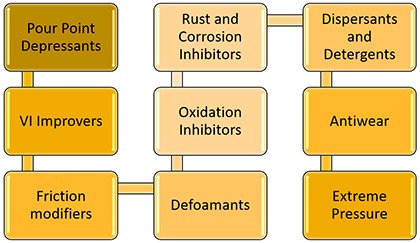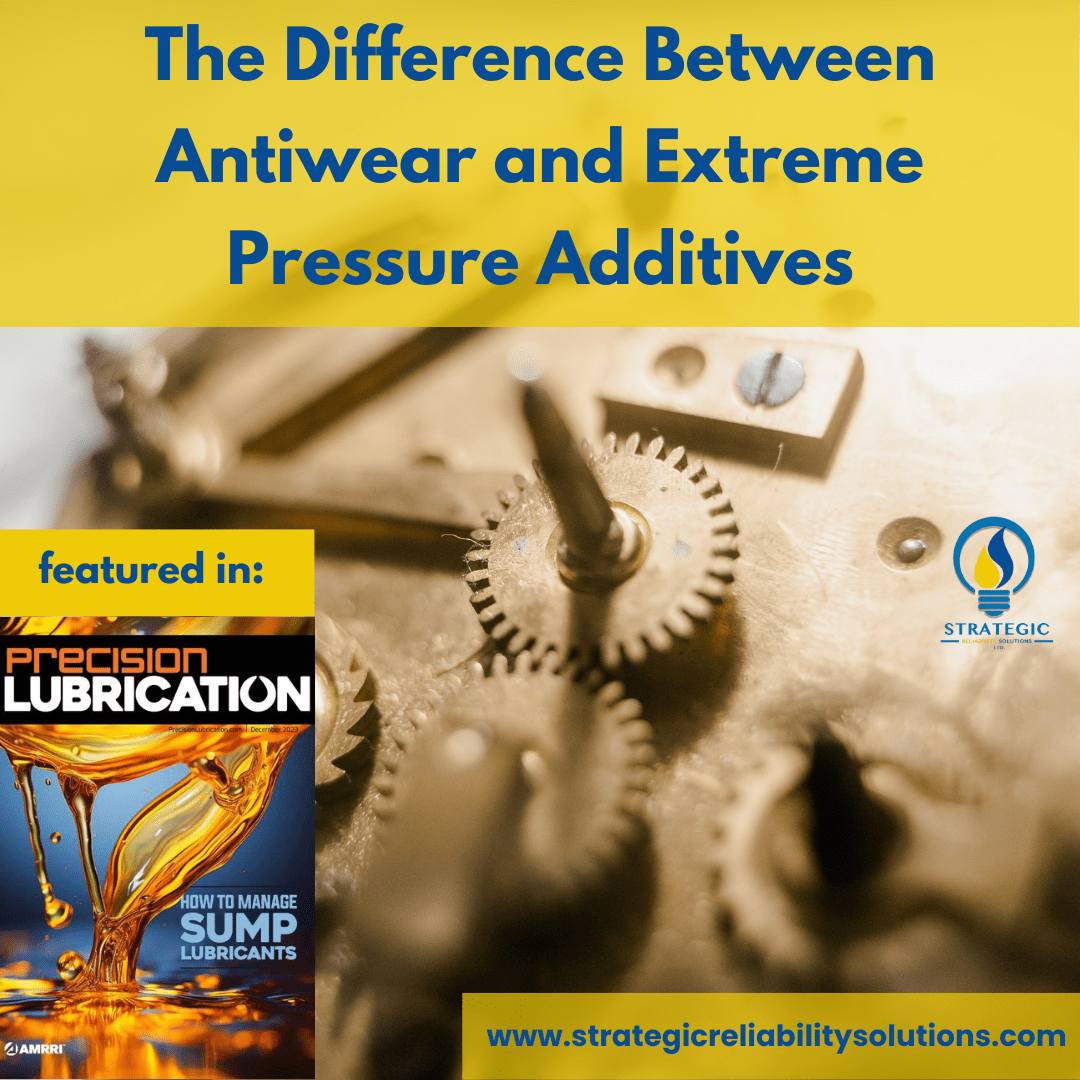There are many types of lubricant additives, and various formulations exist from different suppliers. In this section, we will cover the most common additives found in finished lubricants.
Pour Point Depressants
All liquids have a particular temperature at which they can effectively flow. The liquid’s viscosity and current temperature determine how quickly it moves. As the name implies, this type of additive can assist in lowering the temperature at which the lubricant flows1.
VI Improvers
This should not be confused with Pour Point Depressants. Viscosity Index Improvers are also known as Viscosity Modifiers2. They assist the lubricant in increasing its viscosity at higher temperatures, allowing lubricants to operate in wider temperature ranges.
Friction Modifiers
When two surfaces rub against each other, friction is formed. Depending on the type and extent of friction, some surfaces can experience welding and even adhesive wear. This is where friction modifiers can help by reducing frictional forces associated with stick-slip oscillations and noises.
Defoamants (Antifoam)
Some lubricants succumb to foam being created in their systems. When foam is made, it significantly impacts the functions of the lubricant and can lead to excessive wear due to lack of lubrication (they disrupt the surface of the lubricant), cavitation (due to the presence of air bubbles), and even increased oxidation (due to presence of air trapped in the system). Foam can also affect the ability of a liquid to transfer heat or cool. Defoamants or antifoam additives reduce the amount of foam being produced.
Oxidation Inhibitors (Antioxidants)
Oxidation occurs in most lubricants. During the oxidation process, free radicals emerge, propagating to form alkyl or peroxy-radicals and hydroperoxides, which eventually react with others to form oxidation by-products. During the propagation phase, antioxidants are usually deployed to neutralize the free radicals or decompose the hydroperoxides3. As such, these additives are sacrificial in nature, as they protect the base oil from oxidation by being depleted.
There are many types of antioxidants, including phenolics and aromatic nitrogen compounds, hindered phenols, aromatic amines, zinc dithiophosphates, and a couple of others.
Rust and Corrosion Inhibitors
If oxygen and water are present at a location containing iron, then rust can be formed. Corrosion affects the non-ferrous metals in the presence of acids in the lubricant1. Most pieces of equipment succumb to rust and corrosion quite easily, so these inhibitors were developed to mitigate these effects by forming protective layers on the surfaces of the equipment.
Detergents and Dispersants
These two often get confused as they usually work together to prevent deposits from accumulating in the oils. Detergents neutralize deposit precursors (especially in engine oils), while dispersants suspend the potential sludge or varnish-forming materials4.
Antiwear Additives
Antiwear additives reduce friction and wear, especially during boundary lubrication conditions. They are designed to reduce wear when the system is exposed to moderate stress2.
Extreme Pressure Additives
Extreme Pressure additives are usually confused with antiwear additives, or the names are used interchangeably. However, extreme pressure additives begin to work when the system experiences high stress and try to prevent the welding of moving parts, unlike antiwear additives, which work when the system experiences moderate stress.
Find out more in the full article, "Lubricant Additives: A Comprehensive Guide" featured in Precision Lubrication Magazine by Sanya Mathura, CEO & Founder of Strategic Reliability Solutions Ltd.





